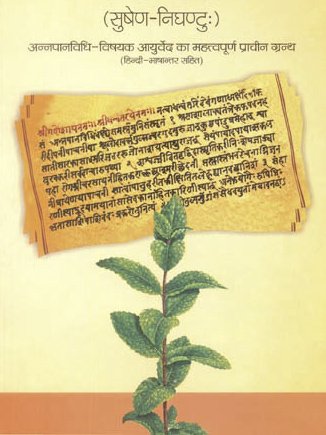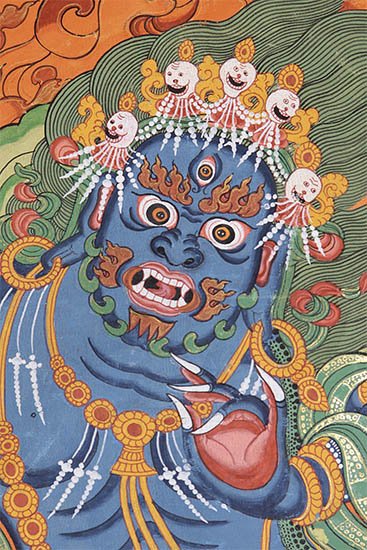Varahika, Varāhikā, Vārāhīkā, Varāhīkā: 3 definitions
Introduction:
Varahika means something in Buddhism, Pali, Hinduism, Sanskrit. If you want to know the exact meaning, history, etymology or English translation of this term then check out the descriptions on this page. Add your comment or reference to a book if you want to contribute to this summary article.
In Hinduism
Ayurveda (science of life)
Nighantu (Synonyms and Characteristics of Drugs and technical terms)
Source: WorldCat: Rāj nighaṇṭu1) Varāhikā (वराहिका) is another name for Kapikacchu, a medicinal plant identified with Mucuna pruriens (velvet bean or cowhage or cowitch) from the Fabaceae or “bean family” of flowering plants, according to verse 3.50-53 of the 13th-century Raj Nighantu or Rājanighaṇṭu. The third chapter (guḍūcyādi-varga) of this book contains climbers and creepers (vīrudh). Together with the names Varāhikā and Kapikacchu, there are a total of twenty-six Sanskrit synonyms identified for this plant.
2) Varāhikā (वराहिका) is also mentioned as a synonym for Aśvagandhā, a medicinal plant identified with Withania somnifera Dunal. (“Indian ginseng” or “Winter Cherry”) from the Solanaceae or Nightshade family of flowering plants, according to verse 4.109-112. The fourth chapter (śatāhvādi-varga) of this book enumerates eighty varieties of small plants (pṛthu-kṣupa). Together with the names Varāhikā and Aśvagandhā, there are a total of twenty-two Sanskrit synonyms identified for this plant.

Āyurveda (आयुर्वेद, ayurveda) is a branch of Indian science dealing with medicine, herbalism, taxology, anatomy, surgery, alchemy and related topics. Traditional practice of Āyurveda in ancient India dates back to at least the first millenium BC. Literature is commonly written in Sanskrit using various poetic metres.
In Buddhism
Tibetan Buddhism (Vajrayana or tantric Buddhism)
Source: OSU Press: Cakrasamvara SamadhiVārāhīka (वाराहीक) [=vārāhī?] refers to a “beloved sow” [?], according to the Ṭīkā Pot Worship [i.e., Kalaśapūjā] ritual often performed in combination with the Cakrasaṃvara Samādhi, which refers to the primary pūjā and sādhanā practice of Newah Mahāyāna-Vajrayāna Buddhists in Nepal.—Accordingly, “Rising out across the circle, that kindles the wind, of a hundred shining suns, A burning triad, infatuating the three worlds, an overflowing stream of nectar, Giving her own abundant bliss, having the pure essence of Buddha knowledge, Free from traversing existence and non-existence, beloved sow (vārāhīka), drink to you”.

Tibetan Buddhism includes schools such as Nyingma, Kadampa, Kagyu and Gelug. Their primary canon of literature is divided in two broad categories: The Kangyur, which consists of Buddha’s words, and the Tengyur, which includes commentaries from various sources. Esotericism and tantra techniques (vajrayāna) are collected indepently.
Languages of India and abroad
Sanskrit dictionary
Source: Cologne Digital Sanskrit Dictionaries: Monier-Williams Sanskrit-English DictionaryVarāhikā (वराहिका):—[from varāhaka > varāha] f. Physalis Flexuosa, [cf. Lexicographers, esp. such as amarasiṃha, halāyudha, hemacandra, etc.]
Sanskrit, also spelled संस्कृतम् (saṃskṛtam), is an ancient language of India commonly seen as the grandmother of the Indo-European language family (even English!). Closely allied with Prakrit and Pali, Sanskrit is more exhaustive in both grammar and terms and has the most extensive collection of literature in the world, greatly surpassing its sister-languages Greek and Latin.
See also (Relevant definitions)
Starts with: Varahikanda, Varahikavaca.
Query error!
Full-text: Shvavarahika, Varahaka, Kapikacchu, Ashvagandha.
Relevant text
Search found 1 books and stories containing Varahika, Varāhikā, Vārāhīkā, Varāhīkā; (plurals include: Varahikas, Varāhikās, Vārāhīkās, Varāhīkās). You can also click to the full overview containing English textual excerpts. Below are direct links for the most relevant articles:
World Journal of Pharmaceutical Research
Efficacy of ashwagandha churna in female general disorders < [2023: Volume 12, August issue 13]